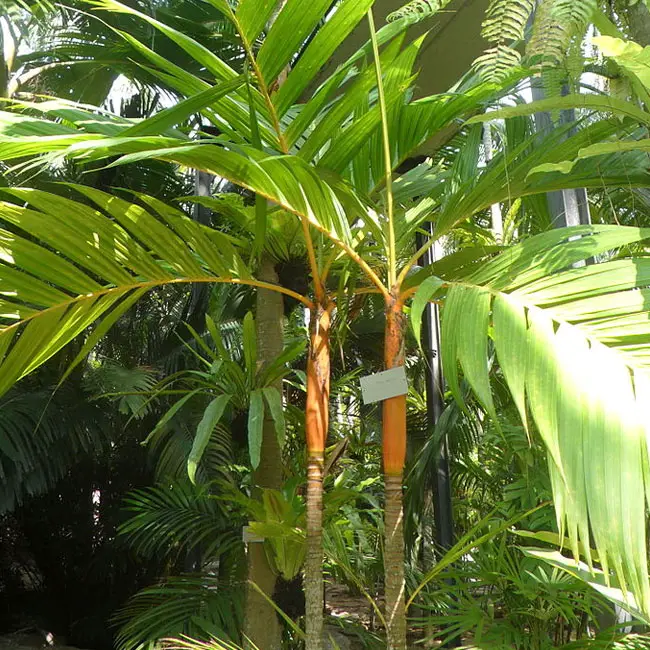
The Orange Crownshaft Palm Tree, scientifically known as Areca vestiaria or Areca vastiaria, is undoubtedly an exotic and rare palm renowned for its striking bright orange crownshaft.
This palm is native to New Guinea and the Solomon Islands in the Pacific Ocean. These regions, known for their tropical climates and rich biodiversity, serve as the natural habitat of this exotic palm species.
In its native environment, the Orange Crownshaft Palm thrives in warm, humid conditions, which contribute to its striking appearance and vibrant colors, including the bright orange crownshaft for which it is named.
Quick Facts:
| Scientific name: | Areca vestiaria or Areca vastiaria |
| Common names: | Orange Crownshaft Palm, Areca vestiaria, Sunset Palm, Orange Collar Palm, Pinang Yaki Palm |
| Origin: | Native to Moluccas Islands, which is off the coast of Indonesia. |
| Growth Rate: | Slow. Up to 15 – 20 ft tall and 8 – 12 ft wide. |
| Cold Tolerance: | USDA Zones 10a (30 to 35 F) to 11 (above 40 F). |
| Light Req: | Partial shade to Full sun. |
| Water Req: | Moderate. |
| Soil Req: | Widely adaptable |
| Fruit: | Yes. Orange. Brown. Edible. |
| Propagation: | By seed germinating 2-3 months. |
Identifying Characteristics of the Orange Crownshaft Palm
Characterized by a solitary, smooth trunk adorned with old leaf scars, it reaches heights of approximately 20 feet and boasts a diameter of about 4 inches.
The Orange Crownshaft Palm is easily distinguished by its pinnate, feather-shaped leaves that emerge from a dazzling bright orange crownshaft, hence its distinctive name. Occasionally, it displays impressive stilt roots.
The vibrant orange petioles and crownshaft create a stunning contrast against the dark green leaves, making this palm a captivating sight even from a distance. To maximize its visual impact, consider planting multiple Orange Crownshaft Palm trees together in groups of three or four.
The fronds of this palm exhibit lush green to deep yellow-green hues, measuring approximately 4 feet in length and 2 feet in width, with 20 to 30 broad leaflets. These gracefully arching leaves grow on smooth, unarmed, yellow to orange stems.
Flowers and Fruits of the Orange Crownshaft Palm
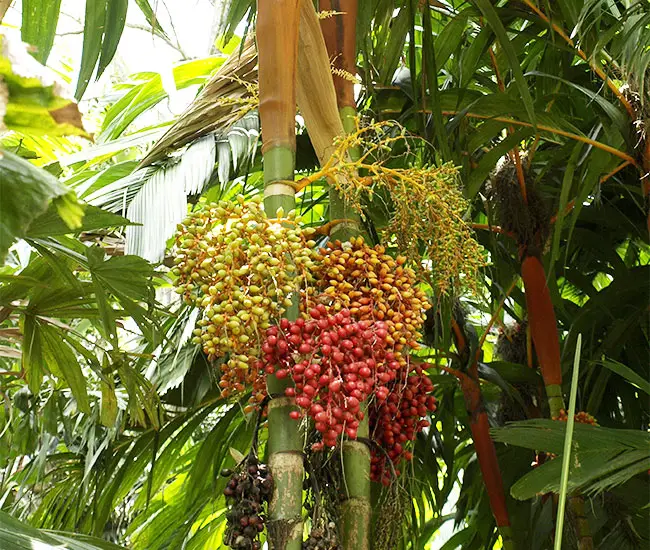
During the summer, the Orange Crownshaft Palm produces small yellow-orange to yellow-green flowers that cluster on a short inflorescence amidst the leaves. These inflorescences emerge at the point where the crownshaft meets the trunk.
Notably, the Orange Crownshaft Palm is a monoecious plant, featuring male and female reproductive units on the same individual. While there are fewer female flowers than male, the female blossoms are larger.
Following the flowering phase, the palm produces orange or yellow fruits that grow in clusters. These fruits undergo a transition in color, progressing from light brown to light orange, deepening to maroon as they mature. Oval in shape and edible, they measure about 1 inch in length.
Caring for the Orange Crownshaft Palm
Areca vestiaria is a slow-growing palm species, reaching heights of 15 to 20 feet and spanning 8 to 12 feet in width. Once established, it exhibits a tolerance for temperatures down to 30°F.
Given its preference for warm climates, it’s advisable to shield the Orange Crownshaft Palm from cold temperatures and frost exposure. This palm thrives in USDA Zones 10a (30 to 35°F) to 11 (above 40°F).
It flourishes in conditions of partial shade or full sun and thrives in moist yet well-draining soil to reach its full potential. To prevent nutritional deficiencies, it is recommended to apply a high-quality palm fertilizer with a continuous-release formula twice a year during the growing season.
Propagation can be achieved through seeds, which typically germinate within a short span of 2 to 3 months.
Orange Crownshaft Palm Pictures


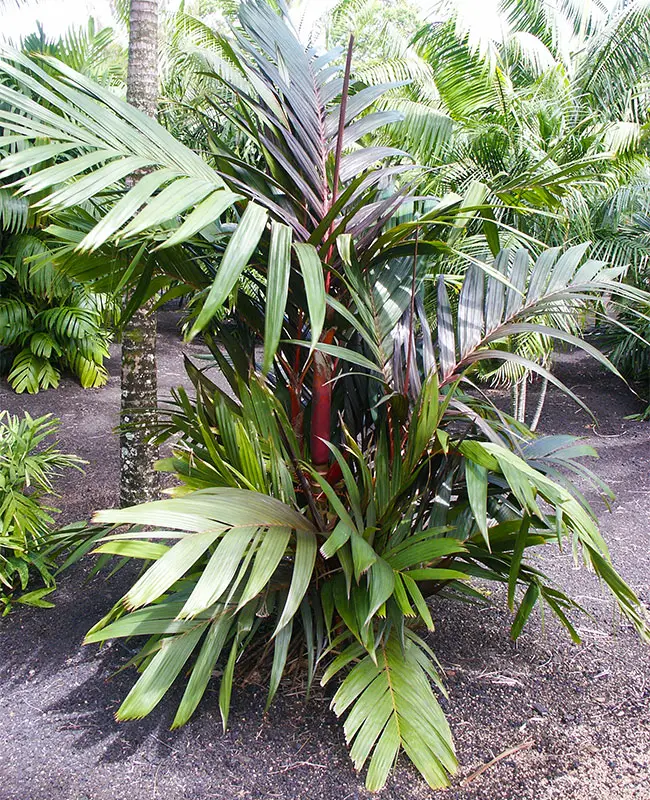
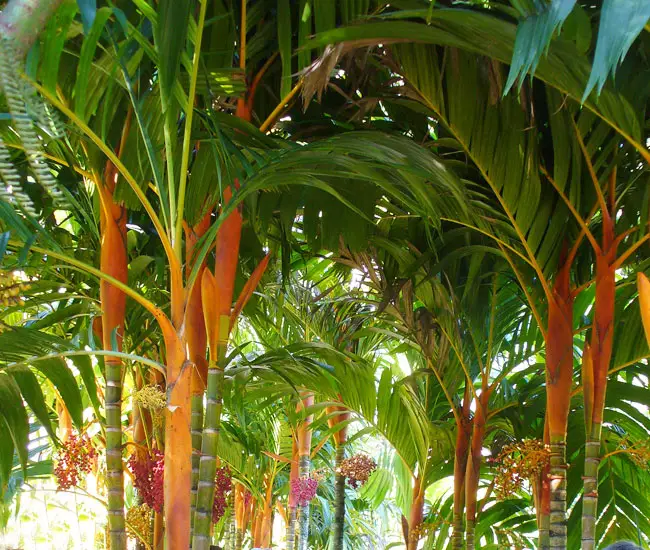
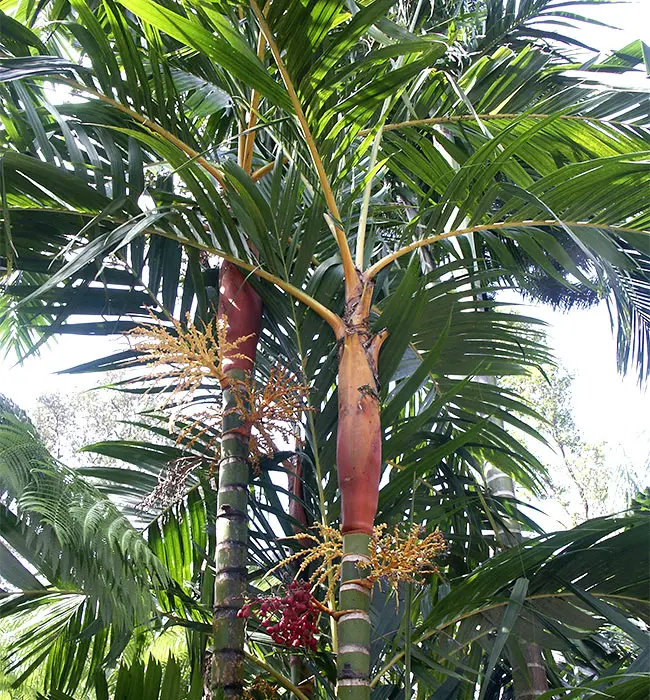
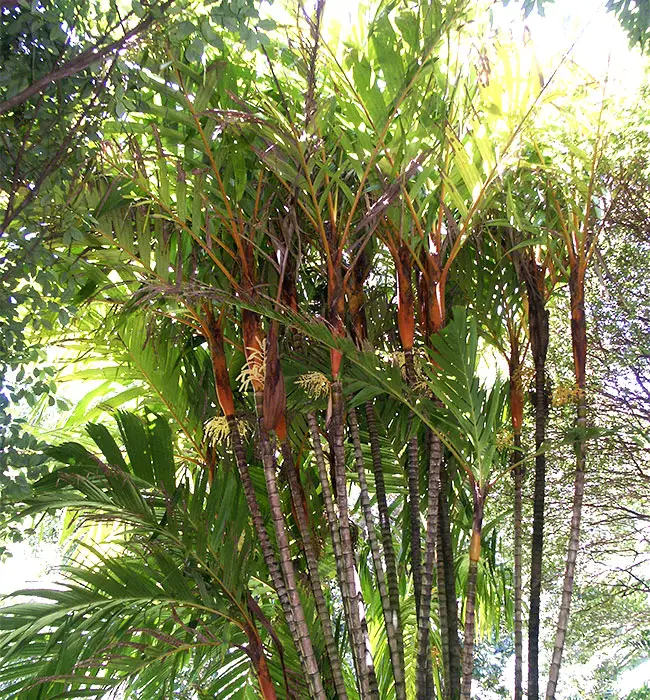

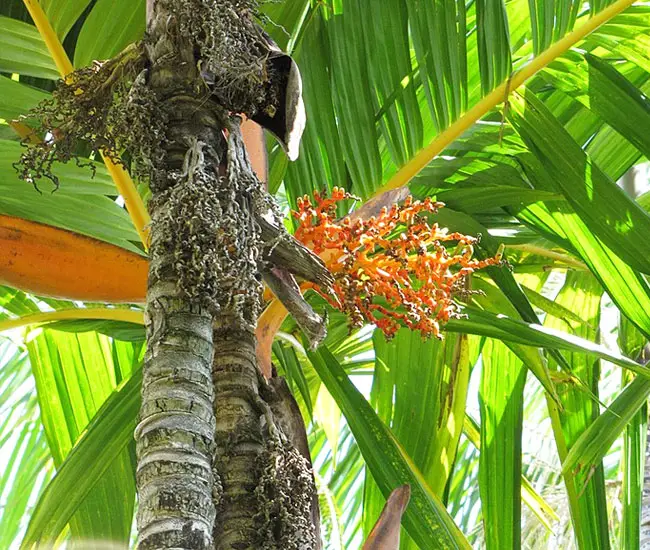
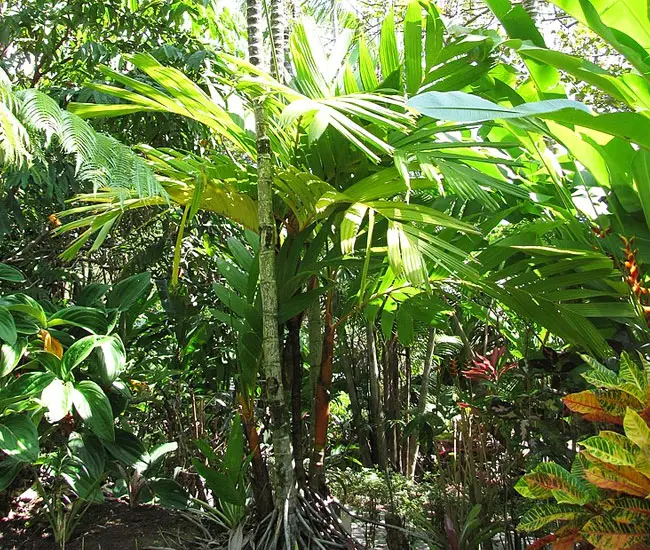
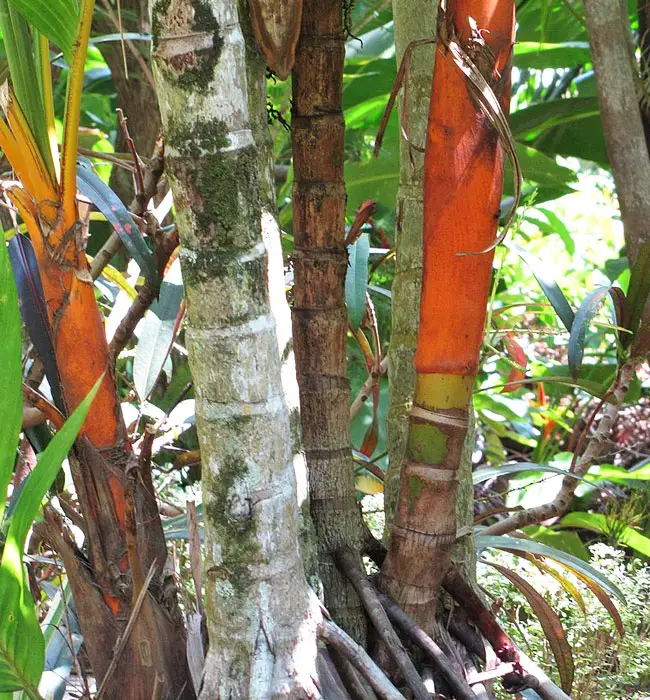
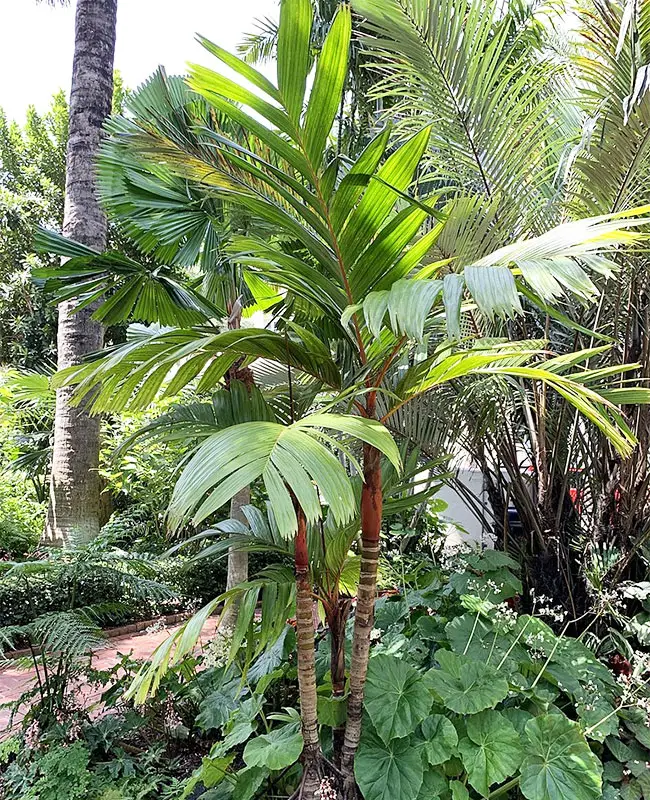
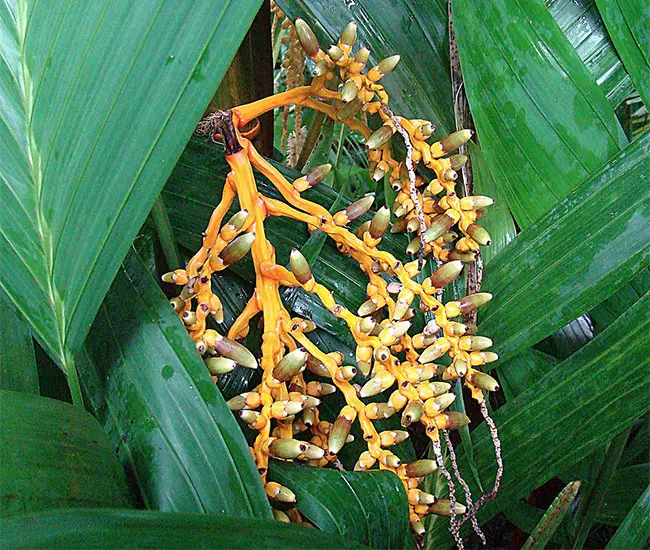

Hello,
Do you have any Areca Vestiaria seeds available for purchase? I believe the ones I received a few months ago from another grower were not viable. Also any advice for germinating would be greatly appreciated.